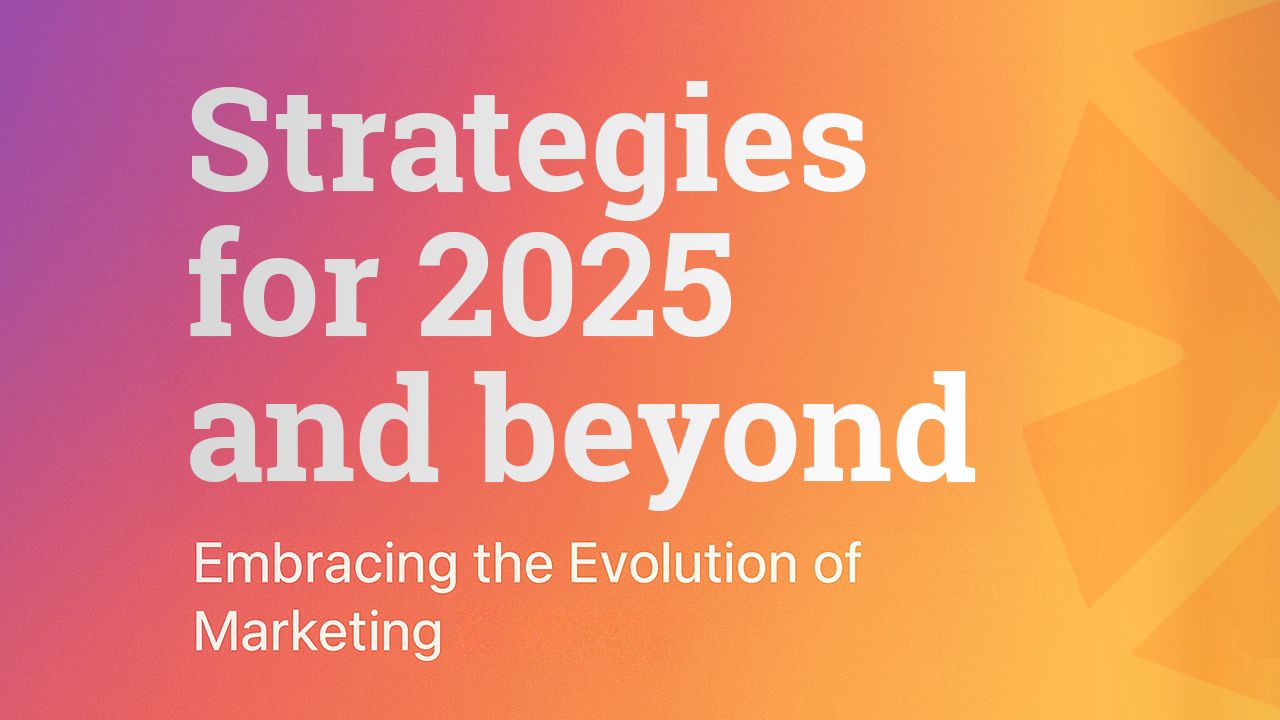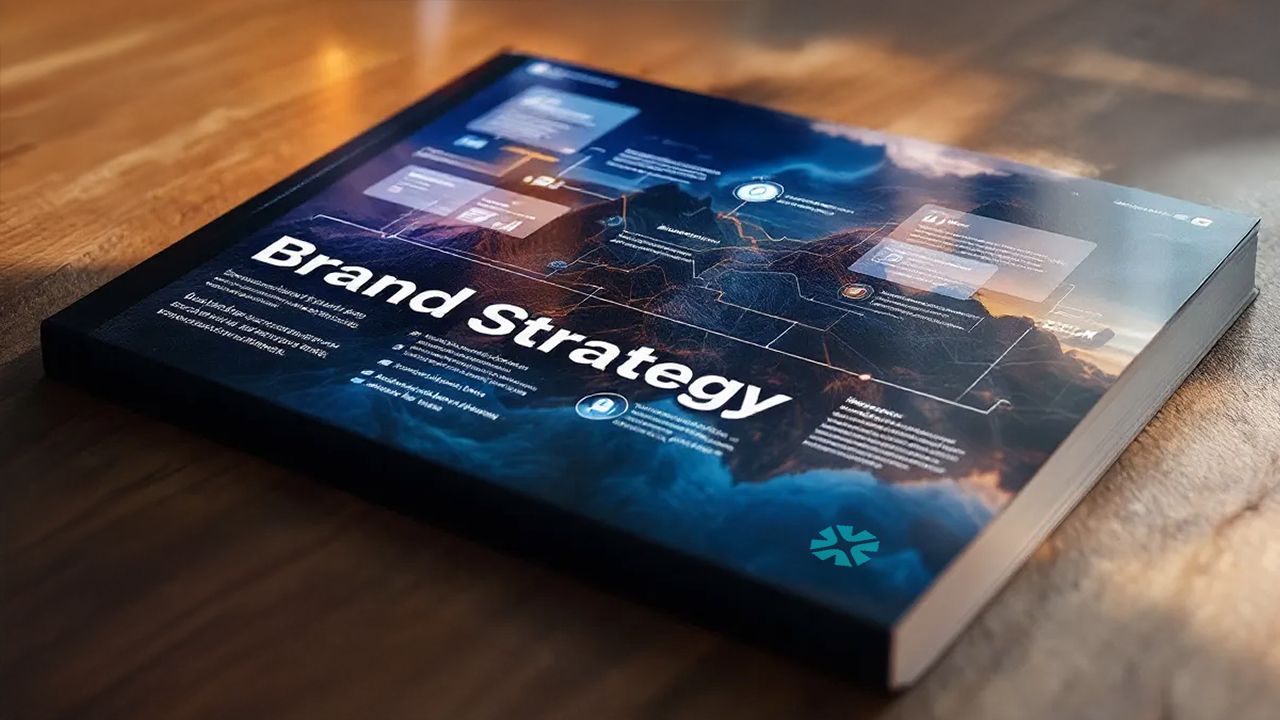Picture this: you’re still utilizing marketing tactics that worked in 2020 while the rest of the world has sprinted ahead into the AI-driven future. If you’ve ever sat through a long meeting discussing engagement metrics only to end up more confused than enlightened, you’re not alone. The truth is, the marketing landscape is shifting more radically than ever, catching out many seasoned marketers. But don’t worry; amidst all these changes lies a treasure trove of insights, strategies, and opportunities for those willing to adapt. Let’s dive into the key trends of 2024 that will ensure you not only keep up but also lead the pack!
The AI Revolution in Marketing
In today’s fast-paced marketing world, AI is not just a tool; it's becoming the backbone of modern marketing strategies. But what does that mean for you? Understanding AI’s role in optimizing campaigns is essential for staying competitive.
1. Understanding AI’s Role in Optimizing Campaigns
AI helps marketers make data-driven decisions. It analyzes vast amounts of data quickly, identifying trends and patterns that humans might miss. Imagine trying to find a needle in a haystack. AI is like a magnet that pulls out the needle, making your job easier.
With AI, you can optimise your campaigns in real time. This means you can adjust your strategies based on what’s working and what isn’t. Brands that adopt AI report lower costs and higher efficiency. Isn’t that something you want for your marketing efforts?
2. How AI Speeds Up Content Creation
Creating content can be time-consuming. But AI tools can help speed up this process. For instance, platforms like ChatGPT can generate ideas, write drafts, and even suggest headlines. This allows you to focus on refining your message rather than starting from scratch.
Consider this: If you could cut your content creation time in half, what could you do with that extra time? You could engage more with your audience, analyze performance, or even brainstorm new campaigns. The possibilities are endless!
3. Examples of AI Tools to Automate Tasks
There are numerous AI tools available that can automate various marketing tasks. Here are a few examples:
HubSpot’s Breeze: This tool optimizes marketing strategies in real time, allowing for quick adjustments based on performance.
Meta's Advantage Plus: This platform automates ad performance optimization, saving you time and improving results.
Google’s Performance Max: Similar to Advantage Plus, it refines ad performance based on user behavior, ensuring your ads reach the right audience.
These tools can help you scale your marketing efforts efficiently. However, it’s important to note that 47% of marketers are still unaware of how to measure AI's impact. Are you one of them?
4. The Consequences of Not Adopting AI
Marketers who aren’t leveraging AI are falling behind. In a world where attention spans are dwindling, you need to adapt quickly. AI can create and optimize strategies in real time, ensuring you stay relevant.
As the marketing landscape evolves, the choice is clear. Embrace AI or risk being left behind. The future of marketing is here, and it’s powered by AI.
“AI isn't just a tool—it's becoming the backbone of modern marketing strategies.”
In summary, understanding AI’s role, speeding up content creation, and utilizing effective tools are crucial for your marketing success. The time to act is now. Don’t let your competitors outpace you!
Engagement First: The Power of Short-Form Content
In today's fast-paced digital world, short-form content is taking center stage. Platforms like TikTok and Instagram Reels are leading the charge, reshaping how we engage with audiences. But why is this shift happening? Let's explore the rise of these platforms and what it means for you.
The Rise of Short-Form Video Platforms
Short-form videos have exploded in popularity. TikTok, for instance, has become a household name. Users flock to these platforms, drawn by quick, entertaining clips. They offer instant gratification—a quick laugh, a new dance move, or a recipe hack. This format is not just a trend; it's a fundamental shift in how content is consumed.
But what does this mean for traditional content? Well, it’s clear that short-form content is outperforming long-form formats. In fact, videos can drive ten times the engagement compared to blog posts alone. This statistic is staggering. It highlights the need for you to adapt your content strategy. Are you ready to embrace this change?
Comparative Engagement Statistics: Short vs. Long-Form Content
Engagement is the name of the game. Social platforms reward engagement time—the longer users stay, the broader the reach. So, how do short-form videos stack up against long-form content?
Here’s a quick comparison:
Short-Form Content: Quick to consume, high engagement rates, ideal for sharing.
Long-Form Content: Provides depth, builds trust, but requires more time investment.
While long-form content has its place, it often struggles to maintain viewer interest. Short videos, on the other hand, can capture attention in seconds. Think about it: how many times have you scrolled through your feed, stopping only for the catchy, quick clips? This is the power of short-form content.
Creating Shareable Content: Tips & Tricks
Now that you understand the importance of short-form content, how can you create it effectively? Here are some tips to help you craft shareable videos:
Keep it Concise: Aim for clarity. Get to the point quickly.
Engage Emotionally: Use humor, surprise, or relatable content to connect with viewers.
Utilize Trends: Stay updated on trending sounds and challenges to boost visibility.
Encourage Interaction: Ask questions or prompt viewers to comment and share.
Creating shareable content is about understanding your audience. What do they want to see? What makes them laugh or think? By tapping into these elements, you can increase your chances of going viral.
For example, The Hustle's YouTube channel has shown the impact of storytelling in video format on audience engagement. Their approach combines informative content with engaging narratives, leading to impressive viewer retention. This is a model worth emulating.
In conclusion, the landscape of content creation is evolving. Short-form content is not just a fad; it's a powerful tool for engagement. By understanding its rise and leveraging effective strategies, you can enhance your content marketing efforts. Are you ready to dive into the world of short-form videos?

Building Consumer Trust in a Post-Cookie World
The digital marketing landscape is changing rapidly. With the decline of third-party cookies, brands face new challenges. What does this mean for you? It means you must adapt your strategies to build consumer trust effectively.
The Decline of Third-Party Cookies and Its Implications
Third-party cookies have been a staple in online advertising. They allowed brands to track user behavior across different sites. However, as privacy concerns rise, many browsers are phasing them out. This shift can feel daunting. But it also opens up new opportunities.
Increased Privacy: Consumers are becoming more aware of their data privacy. They want to know how their information is used.
Shift to First-Party Data: Brands must now focus on collecting first-party data. This data comes directly from your audience, such as email signups and loyalty programs.
Trust Issues: Anonymity in data collection can lead to distrust. When consumers don’t know how their data is handled, they may hesitate to engage.
As a brand, you need to be proactive. The decline of third-party cookies means you must build a direct relationship with your audience. This is where first-party data comes into play.
Strategies for Leveraging First-Party Data
First-party data is your goldmine. It’s information you gather directly from your customers. This can include:
Email addresses
Purchase history
Website interactions
Investing in first-party data can lead to significant benefits. Brands that focus on this strategy often see increased engagement. Why? Because they understand their audience better. They can tailor their marketing efforts to meet specific needs.
For instance, if you know a customer frequently buys running shoes, you can send them personalized offers. This not only boosts sales but also builds loyalty. Remember,
“Brands that own their audience outperform those relying solely on paid ads.”
Building Trust Through Transparency
Transparency is crucial in today’s market. Consumers want to know how their data is used. Being upfront about your data collection practices can foster trust. Here are some tips:
Communicate Clearly: Let your audience know what data you collect and why.
Offer Value: Provide incentives for sharing their data, like exclusive discounts or content.
Be Accountable: If there’s a data breach, inform your customers immediately. This builds trust.
In 2024, collecting email signups and being transparent about data usage is critical. This approach not only helps you gather valuable insights but also reassures your audience that their information is safe.
In summary, the decline of third-party cookies is a wake-up call. It’s time to embrace first-party data and prioritize transparency. By doing so, you can build lasting consumer trust in a rapidly changing digital landscape.
From Brands to Content Creators: The Shift in Marketing Strategies
In today's fast-paced marketing landscape, brands must rethink their strategies. The traditional approach of simply selling products is no longer effective. Instead, brands should focus on educating their audience. Why? Because today's consumers trust creators more than brands. This shift is crucial for staying relevant and engaging with your audience.
Why Brands Should Stop Selling and Start Educating
Think about it: when was the last time you bought something just because an ad told you to? Probably not recently. Consumers are smarter now. They seek value and knowledge. By providing educational content, you position your brand as a trusted resource. This builds credibility and fosters loyalty.
Educate, don’t sell: Share insights, tips, and how-tos related to your industry.
Engage with your audience: Use social media platforms to answer questions and provide support.
Build a community: Create forums or groups where users can share experiences and learn from each other.
When you educate, you empower your audience. This leads to informed decisions and, ultimately, sales. It's a win-win situation.
Examples of Brands Successfully Using Micro-Influencers
Micro-influencers are changing the game. These are individuals with smaller, but highly engaged followings. They often have a more authentic connection with their audience. Brands that collaborate with micro-influencers see better engagement rates. Why? Because their followers trust them.
Case Study: Glossier - This beauty brand has thrived by partnering with micro-influencers who genuinely love their products.
Case Study: Gymshark - They leverage fitness enthusiasts with smaller followings to promote their brand authentically.
These collaborations create relatable content that resonates with audiences. It’s not just about the number of followers; it’s about the connection.
Creating Relatable Content That Resonates with Audiences
To truly connect with your audience, your content must be relatable. This means understanding their needs, desires, and pain points. When you create content that speaks to them, you build a strong emotional connection.
Use storytelling: Share real-life experiences or customer stories that highlight your brand's values.
Be authentic: Show the human side of your brand. Share behind-the-scenes content or employee stories.
Encourage user-generated content: Invite your audience to share their experiences with your products.
Successful brands craft stories that captivate rather than just advertising products. This approach not only engages but also builds trust.
In fact, a staggering 92% of marketers are reallocating budgets from traditional ads to brand-led content. This shift highlights the importance of storytelling and authentic engagement in today's marketing strategies.
As brands like Jaguar have shown, storytelling can effectively appeal to younger audiences, such as Gen Z. By focusing on narratives that resonate, brands can capture attention and foster loyalty.
In summary, the marketing landscape is evolving. Brands must adapt by educating their audience, leveraging micro-influencers, and creating relatable content. Embrace this shift, and you’ll find your brand thriving in an ever-changing environment.
Optimizing Ad Spend with AI-Powered Tools
In today's fast-paced marketing world, AI-powered tools are not just a luxury; they are a necessity. If you want to stay competitive, you need to embrace these technologies. But why should you care? What if your ads could optimize themselves?
With AI, they already can.
Let’s explore how AI can transform your ad strategies.
Benefits of AI in Ad Targeting and Cost Management
AI offers numerous advantages when it comes to ad targeting and cost management. Here are some key benefits:
Enhanced Targeting: AI analyzes vast amounts of data to identify your ideal audience. It learns user behavior, allowing for smarter ad placements.
Cost Efficiency: By automating ad management, AI reduces the need for manual adjustments. This leads to better budget allocation and lower costs.
Improved Conversions: AI helps optimize ad content and delivery, which can significantly boost conversion rates.
Imagine being able to reach the right people at the right time without constantly tweaking your campaigns. That’s the power of AI!
Real-Life Examples of AI Success in Ad Campaigns
Many companies have successfully integrated AI into their advertising strategies. Here are a few notable examples:
Meta's Advantage Plus: This tool automates ad testing and optimization, resulting in improved performance and reduced costs.
Google's Performance Max: This platform uses machine learning to optimize ad placements across Google’s ecosystem, driving better results for advertisers.
HubSpot's Breeze: This AI-driven platform helps marketers refine their strategies in real-time, leading to increased efficiency and effectiveness.
These examples show that AI isn’t just a buzzword; it’s a game-changer for businesses looking to enhance their advertising efforts.
How to Experiment with AI-Driven Ad Strategies
Ready to dive into AI-driven ad strategies? Here’s how you can start experimenting:
Choose the Right Tools: Select AI platforms that align with your goals. Look for features like automated testing and real-time analytics.
Set Clear Objectives: Define what you want to achieve with your campaigns. Is it brand awareness, lead generation, or sales?
Monitor and Adjust: Use the data provided by AI tools to make informed decisions. Don’t be afraid to tweak your strategies based on performance.
Experimentation is key. Start small, analyze the results, and scale up your efforts as you gain confidence in AI’s capabilities.
In conclusion, leveraging AI in your advertising strategies can lead to significant improvements in targeting, cost management, and overall campaign performance. The future of marketing is here, and it’s powered by AI. Are you ready to take the plunge?
The Future of Search: Is Social Media Taking Over?
Have you noticed a change in how people search for products? If you’re like many, you might be surprised to learn that more people are searching on TikTok than on Google nowadays. This shift is not just a trend; it’s a significant change in consumer behavior, especially among Gen Z. They are moving away from traditional search engines and embracing social media platforms for their product searches. So, what does this mean for you and your brand?
The Shift from Google to TikTok
In the past, Google was the go-to for product searches. But now, platforms like TikTok are taking the lead. Why? It’s simple. TikTok offers a dynamic, engaging experience. Users can see products in action, hear reviews, and even get tutorials—all in a matter of seconds. This visual and interactive format captures attention in ways that text-based search results simply can't.
Engagement: TikTok’s short videos keep users engaged longer.
Authenticity: Real people sharing their experiences resonate more than polished ads.
Trends: TikTok thrives on trends, making it easier for products to go viral.
Adapting Content for Social Search Optimization
So, how can you adapt your content strategy to fit this new landscape? Here are some key strategies:
Utilize TikTok’s Search Bar: This tool can reveal trending keywords that are popular among users. Incorporate these keywords into your content to increase visibility.
Focus on Short-Form Videos: Create engaging, bite-sized content that showcases your products. Think tutorials, unboxings, or quick reviews.
Leverage Hashtags: Use relevant hashtags to enhance discoverability. Research trending hashtags related to your niche.
By embracing these strategies, you can position your brand to be found where consumers are looking. It’s not just about being present; it’s about being relevant.
Utilizing Social Trends to Enhance SEO
Social media trends can significantly impact your SEO strategy. Here’s how:
Monitor Trends: Keep an eye on what’s trending on platforms like TikTok. This can inform your content creation and help you stay ahead.
Engage with Your Audience: Respond to comments and engage with users. This builds community and trust.
Collaborate with Influencers: Partnering with influencers can amplify your reach and lend credibility to your brand.
Remember, the landscape of search is evolving. Brands that fail to adapt risk being left behind. As you rethink your content strategy, consider how you can leverage social media to enhance your visibility and connect with your audience.
In this fast-paced digital world, staying relevant is crucial. By understanding the shift towards social media for product searches, you can craft a strategy that not only meets the needs of today’s consumers but also positions your brand for future success. Are you ready to embrace this change?
Conclusion: Embrace Change or Get Left Behind
The marketing landscape is changing faster than ever. If you’re still operating under outdated strategies, you’re already falling behind. The rise of technology, especially Artificial Intelligence (AI), is reshaping how marketing works. Attention spans are shrinking, and brands that don’t adapt risk being forgotten. So, how do you stay relevant in this fast-paced environment?
First, let’s reflect on the ever-evolving marketing landscape. The tools and platforms that worked yesterday may not work today. For instance, AI tools like ChatGPT and HubSpot’s Breeze are game-changers. They allow you to optimize your marketing strategies in real-time. If you’re among the 47% of marketers unsure about measuring AI’s impact, it’s time to dive into the data. Understanding how these tools can benefit you is crucial.
The Importance of Agility
Next, consider the importance of agility in adopting new strategies. The ability to pivot quickly is essential. Think about it: can you afford to wait and see if a trend will pass? By the time you decide, it may be too late. Companies that embrace change can automate processes, scale quickly, and make informed decisions. This agility is not just a competitive advantage; it's a necessity.
Moreover, maintaining audience engagement is a pressing challenge. Attracting clicks is one thing, but keeping viewers engaged is another. Emerging formats like TikToks and Instagram Reels are proving to be more effective than traditional content. Long-form videos engage viewers significantly more than static posts. So, are you ready to adapt your content strategy? Start producing short-form videos and focus on tracking engagement metrics like watch time and shares. This shift can lead to higher conversion rates.
Encouraging a Mindset Shift
Finally, let’s talk about encouraging a mindset shift for long-term success. You need to think ahead. As Kit Bodner wisely stated, “Marketers must think a year ahead to stay relevant.” This means looking beyond immediate results and considering the future of your brand. Are you prepared to embrace these changes, or will you look back wishing you started sooner?
In conclusion, the marketing world is evolving, and you must keep pace. By integrating AI, prioritizing user engagement, and building authentic content strategies, you can position your brand for success. The question is: will you take the leap, or will you be left behind? The choice is yours.



